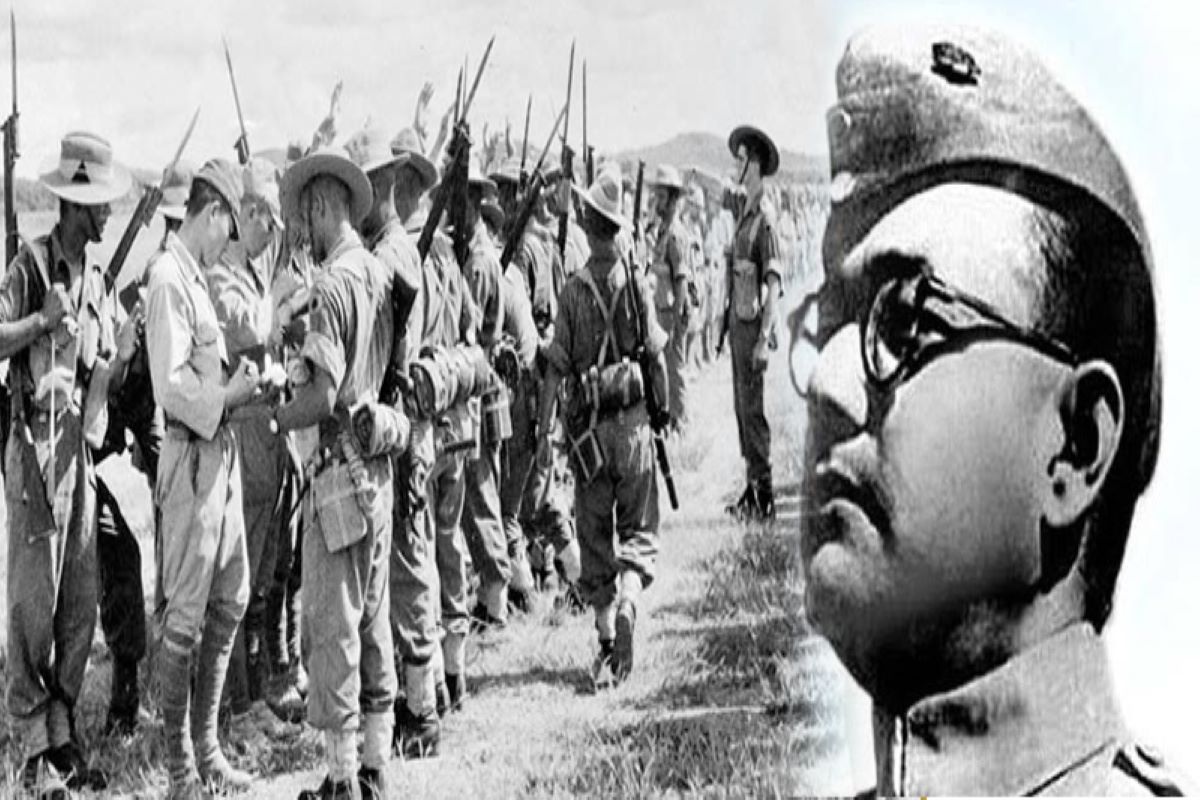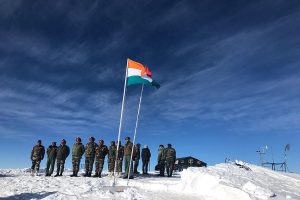It took nearly five decades to bring to light the original Constitution of India that bears a set of painting illustrations including the image of Netaji Subhas Chandra Bose leading the military campaigns of his INA against the British India, said Dr. Sukumar Sarkar, the former director general of National Archives of India.
In an interview with The Statesman, Dr. Sarkar questioned the Union government’s policy on both the classified files pertaining to Netaji and the Constitutional illustration of INA (Indian National Army). He noted that on the occasion of the golden jubilee of India’s independence followed by 50 years of the Constitution, the central government had published 1000 copies of the original Constitution of India which were actually the replica of the Constitution’s manuscript adorned with painting illustrations.
Advertisement
He said that the former home minister, L. K. Advani had taken the initiative to print the original Constitution when Atal Bihari Vajpayee was the Prime Minister of India. The illustrative images of the Constitution signify historical sequence and artistic flavor, Dr. Sarkar said.
He told The Statesman, “There are more pertinent questions which should be raised to rationalise and settle things about Netaji and his INA troops, There is INA government’s resolution to celebrate ‘Netaji Week’ every year in July. But the matter has gone under the carpet.” He also said that there are classified files on Netaji in custody of historical division of our defence ministry and similarly the ASI (Archeological Survey of India) also has Netaji dossiers for years. Why should the Home and IB files be left in darkness for decades, that too in places not relevant enough?, he asked.
The need of the hour is to uphold values of Netaji and the INA government which was driven by the force of harmony, equality and rhythms of India cutting across all sorts of colors, creeds and communal divides, said Dr. Sarkar. Questions should be raised about the trials of around two lakhs prisoners associated with the INA led by Netaji, he said. “What happened to those put on trial? How were the INA prisoners treated, penalized or executed? The Centre should honestly address these questions,” said the former head of National Archives.
According to scholars, it was Jawaharlal Nehru, the former Prime Minister of India, who had physically brought the mother copy of India’s Constitution to Shantiniketan, the educational centre of Rabindranath Tagore at Bolpur of Birbhum district in Bengal, after it was signed by all the members of the Constituent Assembly. Following Nehru’s request, the illustrations of the Constitution were accomplished by 30 artists led by Nandalal Bose, the great Indian painter of Shantiniketan, said Shyamal Das, a writer and member of the Supreme Court Bar Association.
He said that Nandalal Bose and his student artists had probably put in highest efforts to adorn the first copy of the Constitution of India. Referring to birth centenary volumes of a book (Bharatshilpi Nandalal authored by Dr. Panchanan Mandal), Das claimed that Nandalal met with utter disappointment as the images of the Constitution were not published in his lifetime.
In the fourth volume of the book (page no. 624) Nandalal narrates, “I selected the image of Netaji. He is coming with flag hoisting from the East. I put it as an illustration of the Constitution but they (government authorities) did not print it.” Considering the Constitutional status of Netaji Subhash Chandra Bose, the central government should declare Netaji’s birthday, 23 January, as a national holiday and this could be a fitting tribute to Netaji amidst the nation-wide celebration of his 125th birth anniversary, the top court lawyer said. He also demanded that the Union government should popularize the Constitution’s illustrations which actually enshrine Mahatma Gandhi’s vision of 5000 year old democratic tradition of India.











